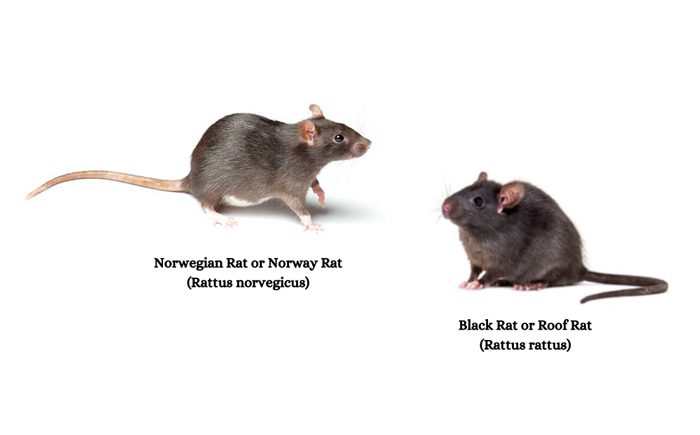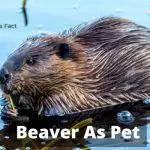2 Main Types of Rats In Washington You Need to Worry About
Washington is full of rats, and everyone knows this. But if you’ve recently moved to Washington and you want to do some basic homework on the types of rats in Washington, we might do our part.
When it comes to types of rats in Washington, there are two types commonly seen in Washington. First, there’s the Norway Rat (Rattus norvegicus), known for its stocky build and affinity for subterranean burrows. Then, we have the Roof Rat (Rattus rattus), with its slender frame and acrobatic climbing skills. It often takes up residence in attics and high-rise havens.
But there are other types of rats available in Washington, which might not be that ‘common,’ but they exist. Let’s take you on a tour to know these rats and how you can locate them.
What Are The 2 Main Types of Rats In Washington?
As we’ve mentioned, the Norwegian rats and Black rats are the main types of rats in Washington. They’re widespread all over the city. Let’s get to know about them a bit.

Norwegian Rat or Norway Rat (Rattus norvegicus)
The Norwegian rat is also known as the Brown Rat. Originally from places like China and Mongolia, they’ve become real globetrotters and even make popular pets. But here’s the twist. Most of those pesky rats you see running around in the U.S. also belong to this crew.
These guys are big, reaching up to a whopping 16 inches long (tail not included). Their fur can come in shades from brown to gray, and they sport a long, scaly tail. Take a peek at their ears, and you’ll notice they’re on the smaller side, and their eyes? Well, they’re small, dark, and look pretty beady.

Now, in Washington, these rats are pretty much everywhere, just like they are across North America. They’ve got a thing for living close to us humans. So if you spot a rat rummaging through your kitchen, chances are, it’s one of these Norwegians!
Habits
Let’s talk about the habits of Norwegian rats. They’re basically creatures of the night, mostly active after the sun goes down. They’ve got super sniffers and taste buds. No wonder they’re awesome at finding food. Their menu is quite versatile; they’ll munch on grains, fruits, veggies, and even trash!
But here’s the social side of them: Norwegian rats are real party animals! They hang out in groups, forming colonies, and get busy making cozy homes underground. These burrows are like their secret hideouts.
Habitats
Guess where you can bump into these rats? Pretty much anywhere! You can find them out in cities, farms, and forests. These rats are the ultimate survivors, whether it’s in the wild or in places that are human-altered.

They love cozy spots like buildings, sewers, and such, which can turn them into surprise houseguests you didn’t invite.
Signs of a Norway Rat Infestation
You can spot signs of a Norway rat infestation in a home quite easily. One common clue is seeing gnaw marks all around the house. These marks can look rough if they’re new or smooth and greasy if they’re older.
Another telltale sign is finding capsule-shaped droppings. These droppings from Norway rats are around ¾ inch (18-20 mm) and have blunt ends. Keep an eye out for footprints and dark rub marks from their oily fur. Look for the signs along pathways, burrows, runways with stacked food, and damaged food items as well. These are all indicators that you might have a Norway rat problem in your home.
Are Norwegian Rats Harmful?
Norwegian rats are known to chew on just about anything that gets in their way. When they gnaw through walls to enter, it can destroy your house. Plus, they also pose health risks by carrying diseases like salmonella, rat-bite fever, and trichinosis.

Black Rat or Roof Rat (Rattus rattus)
The Black Rat, a.k.a Roof Rat, is a well-traveled guest in North America. Originally from India, it hopped aboard cargo ships and now calls this place home. Surprisingly, it’s very common in Washington. It’s around 6-8 inches long, without the tail.
The Black Rat is quite the looker! It sports sleek fur, usually in shades of black or dark brown. Its ears are big and round, and check out that tail – it’s long and slender, even longer than its body!

But here’s the snag – in the world of farming, it’s not a welcomed visitor. Why? Because it has a taste for all sorts of crops, and that’s a headache for farmers. Plus, like other rodents, these Black Rats can carry some nasty germs. Even if they look perfectly fine, they can pass on infections like toxoplasmosis, typhus, and even the bubonic plague.
These Black Rats are a tad smaller and don’t have babies as often, which helps explain why they’re not as widespread as their Brown Rat cousins.
Habit
Just like their Brown Rat pals, Black Rats are creatures of the night. These guys are like climbing pros, often seen scampering up trees, rooftops, and other high-up places. When it comes to chow time, they’re not picky eaters. They feed on grains, fruits, and seeds, just like Brown Rats.
Not to mention, they’re fantastic swimmers. They can even sneak into homes through the plumbing system! So, if you’ve got a Black Rat problem, they might just be making a surprise entrance through your pipes.
Habitat
Black Rats are like fans of warm places, especially near the coast. They’re all about setting up camp in spots where food and water are easy to grab. In Washington, you might spot them hanging out in secret spots like attics or walls.

Now, if you don’t want them as roommates, here’s the trick – block any doors they might use to sneak in. Make sure there’s nothing yummy around to tempt them. That way, you can keep Black Rats from crashing your place.
Signs of a Black Rat Infestation
Fresh roof rat droppings are soft and moist, while older ones become hard and dry. They are typically about ½ inch (12-13 mm) in size and have pointed ends. Keep an eye out for gnaw marks, damaged items, nests, or greasy marks, as well, as these can all suggest roof rat activity. If you hear noises in your attic or inside your walls or notice damaged electrical wires, these could also be signs of an infestation.
Are Black Rats Harmful?
Black rats can be quite dangerous when it comes to spreading diseases, especially when they get close to human areas. These creatures have the natural ability to transmit harmful illnesses to you and your family. And the diseases we’re talking about can seriously disrupt your daily life. Some of the most common diseases they can carry include Leptospirosis.

Other Rat Types Found in Washington
Even though you can mostly see Norwegian Rats and Black Rats in Washington, there are other two types of rats that are seen pretty much.
Bushy-Tailed Wood Rats or Pack Rats
Meet the bushy-tailed wood rats. Or should we call them pack rats? They’re about 6-8 inches long, and that too without the tail. These little critters have a knack for shiny stuff!
They sport fluffy tails, big round ears, and have brown-black fur. They’re probably the best rats that can fight cold weather so far. Meaning they’ll cause you trouble all the year.

These rats have great climbing and jumping skills. This is why it’s always a good idea to keep vines and tree branches near your eaves and gutters in check. Otherwise, it’s an open invitation for these wood rats to your home.
Kangaroo Rats
Now, don’t let the name fool you – these critters aren’t really cousins of rats, despite the name. They’re called “rats” simply because they look a lot like them. Picture this: They’ve got an extra toe on their back feet, perfect for making big jumps. Plus, they rock a golden-brown coat with a white tummy.

In Washington, the Kangaroo rat we’re talking about is the Ord’s Kangaroo rat. These guys have bushy tails with a tip, and they prefer hanging out in dry areas. They’re not big on socializing, except when it’s time to make more Kangaroo rats. If you’re out in Eastern Washington, you might just cross paths with these furry loners.
FAQs
Here are some commonly asked questions based on various types of rats in Washington.
1. Are rats dangerous?
Mice and rats both carry a lot of diseases that can spread in humans directly. This can spread through contact with the feces of the rodents, saliva, or urine.
2. Which US city has the largest rats?
Even though Washington has got lots of rats, Chicago has the largest number of rats so far.
3. Which US city has the largest rats?
The Gambian pouched rat is the largest rat in the world. Its origin is in Africa, and it weighs about 9 pounds.
Wrapping Up!
So, that was pretty much everything on the types of rats in Washington. Now, there are other rodents like mice and voles that live in Washington. Even though they look like rats, they’re not particularly rats.
The rats we talked about are the ones you can see most of the time, especially Norwegian rats and Black rats. The Bushy-tailed wood rats and Kangaroo rats are seen in Washington, too. However, their number isn’t as much as the previous two types.




